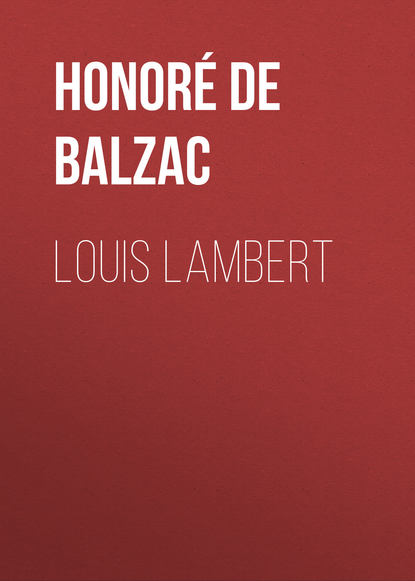 Полная версия
Полная версияLouis Lambert
Man looks to faculties; angels look to the Essence.
IXBy giving his body up to elemental action, man can achieve an inner union with the Light.
XNumber is intellectual evidence belonging to man alone; by it he acquires knowledge of the Word.
XIThere is a Number beyond which the impure cannot pass: the Number which is the limit of creation.
XIIThe Unit was the starting-point of every product: compounds are derived from it, but the end must be identical with the beginning.
Hence this Spiritual formula: the compound Unit, the variable Unit, the fixed Unit.
XIIIThe Universe is the Unit in variety. Motion is the means; Number is the result. The end is the return of all things to the Unit, which is God.
XIVThree and Seven are the two chief Spiritual numbers.
XVThree is the formula of created worlds. It is the Spiritual Sign of the creation, as it is the Material Sign of dimension. In fact, God has worked by curved lines only: the Straight Line is an attribute of the Infinite; and man, who has the presentiment of the Infinite, reproduces it in his works. Two is the number of generation. Three is the number of Life which includes generation and offspring. Add the sum of four, and you have seven, the formula of Heaven. Above all is God; He is the Unit.
After going in to see Louis once more, I took leave of his wife and went home, lost in ideas so adverse to social life that, in spite of a promise to return to Villenoix, I did not go.
The sight of Louis had had some mysteriously sinister influence over me. I was afraid to place myself again in that heavy atmosphere, where ecstasy was contagious. Any man would have felt, as I did, a longing to throw himself into the infinite, just as one soldier after another killed himself in a certain sentry box where one had committed suicide in the camp at Boulogne. It is a known fact that Napoleon was obliged to have the hut burned which had harbored an idea that had become a mortal infection.
Louis' room had perhaps the same fatal effect as that sentry box.
These two facts would then be additional evidence in favor of his theory of the transfusion of Will. I was conscious of strange disturbances, transcending the most fantastic results of taking tea, coffee, or opium, of dreams or of fever – mysterious agents, whose terrible action often sets our brains on fire.
I ought perhaps to have made a separate book of these fragments of thought, intelligible only to certain spirits who have been accustomed to lean over the edge of abysses in the hope of seeing to the bottom. The life of that mighty brain, which split up on every side perhaps, like a too vast empire, would have been set forth in the narrative of this man's visions – a being incomplete for lack of force or of weakness; but I preferred to give an account of my own impressions rather than to compose a more or less poetical romance.
Louis Lambert died at the age of twenty-eight, September 25, 1824, in his true love's arms. He was buried by her desire in an island in the park at Villenoix. His tombstone is a plain stone cross, without name or date. Like a flower that has blossomed on the margin of a precipice, and drops into it, its colors and fragrance all unknown, it was fitting that he too should fall. Like many another misprized soul, he had often yearned to dive haughtily into the void, and abandon there the secrets of his own life.
Mademoiselle de Villenoix would, however, have been quite justified in recording his name on that cross with her own. Since her partner's death, reunion has been her constant, hourly hope. But the vanities of woe are foreign to faithful souls.
Villenoix is falling into ruin. She no longer resides there; to the end, no doubt, that she may the better picture herself there as she used to be. She had said long ago:
"His heart was mine; his genius is with God."
CHATEAU DE SACHE. June-July 1832.
ADDENDUM
The following personages appear in other stories of the Human ComedyLambert, Louis
A Distinguished Provincial at Paris
A Seaside Tragedy
Lefebvre
A Seaside Tragedy
Meyraux
A Distinguished Provincial at Paris
Stael-Holstein (Anne-Louise-Germaine Necker, Baronne de)
The Chouans
Letters of Two Brides
Villenoix, Pauline Salomon de
A Seaside Tragedy
The Vicar of Tours



